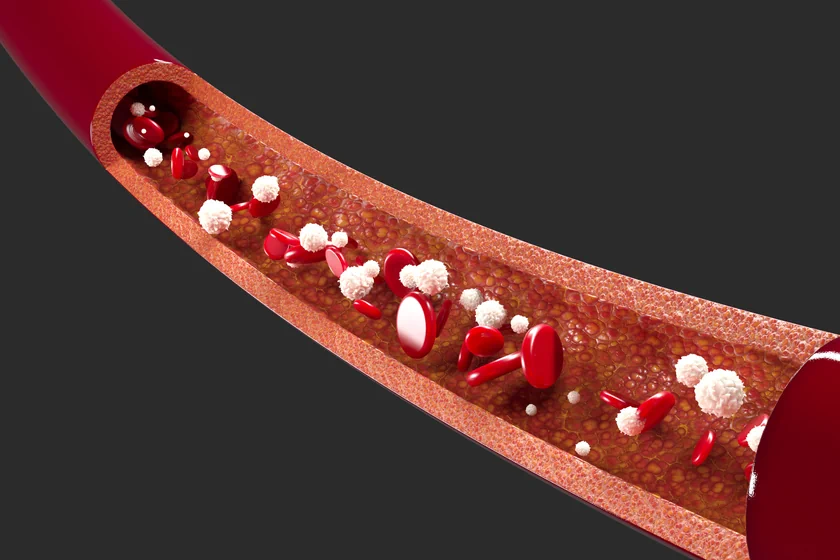
How to Improve Your Blood Circulation?
In today’s fast-paced world, prioritizing optimal blood circulation has become increasingly important, especially for individuals navigating the challenges of modern living.
As a vascular health specialist, I, Dr. Sumit Kapadia, am acutely aware of the impact that sedentary lifestyles and technology-driven habits can have on vascular health, particularly in today’s generation.
In this blog, I’ll share my expert tips for improving blood circulation and discuss why they are particularly relevant in an era where prolonged sitting, excessive screen time, and unhealthy lifestyle choices abound.
From simple yet effective lifestyle modifications to targeted exercises and mindfulness practices, my insights offer practical solutions for unlocking vitality and safeguarding well-being in the digital age.
Importance of Blood Circulation
Blood circulation is critically important for delivering oxygen and nutrients to tissues, removing waste products, and maintaining overall health and function of the body. A clear example of the importance of blood circulation can be seen in the context of a heart attack.
During a heart attack, a blockage in one of the coronary arteries restricts blood flow to a portion of the heart muscle. As a result, the affected area is deprived of oxygen and nutrients, leading to tissue damage or cell death if blood flow is not restored promptly. The consequences of impaired blood circulation in this scenario can be severe, potentially resulting in long-term cardiac complications or even death.
This example highlights how vital blood circulation is for sustaining life and optimal organ function. Without adequate circulation, tissues and organs cannot receive the necessary oxygen and nutrients to thrive, underscoring the critical role they plays in maintaining overall health and well-being.
Causes of Poor Blood Circulation
Poor blood circulation can arise from various factors, contributing to a range of health issues. Here are some common causes:
- Sedentary lifestyle: Lack of physical activity can lead to weakened blood flow, as regular movement helps stimulate circulation and maintain vascular health.
- Obesity: Excess weight puts additional strain on the circulatory system, impairing blood flow and increasing the risk of conditions such as atherosclerosis and peripheral artery disease.
- Smoking: Tobacco use damages blood vessels, constricts arteries, and reduces the oxygen-carrying capacity of the blood, all of which can contribute to poor circulation.
- Diabetes: High blood sugar levels associated with diabetes can damage blood vessels and nerves, leading to impaired circulation, especially in the extremities.
- Peripheral artery disease (PAD): Atherosclerosis, or the buildup of plaque in the arteries, can narrow or block blood vessels, restricting blood flow to the limbs and causing symptoms of poor circulation.
Also read – Peripheral Arterial Disease Treatment Options - Blood clots: Blood clots can form in the veins or arteries, obstructing blood flow and potentially leading to serious complications such as stroke or heart attack.
- High cholesterol: Elevated levels of cholesterol can lead to the buildup of plaque in the arteries, reducing blood flow and increasing the risk of cardiovascular disease.
- Hypertension: High blood pressure can damage blood vessels over time, impeding circulation and increasing the risk of heart disease and stroke.
- Aging: As we age, blood vessels may become less flexible and less efficient at delivering oxygenated blood to tissues, resulting in reduced circulation.
- Certain medical conditions: Conditions such as Raynaud’s disease, vasculitis, and varicose veins can also contribute to poor blood circulation, affecting different parts of the body.
Symptoms of Poor Blood Circulation
Poor blood circulation can manifest through various symptoms, indicating underlying vascular issues. Here are some common signs to watch for:
- Cold hands and feet: Reduced blood flow to the extremities can cause them to feel cold, even in warm temperatures.
- Numbness or tingling: Impaired circulation may lead to sensations of numbness, tingling, or pins and needles in the hands, feet, or other affected areas. This can often be a sign of neurological issue apart from circulation problem.
- Swelling: Fluid retention due to poor circulation can result in swelling, particularly in the legs, ankles, or feet.
Also read – Effective Ways to Reduce Leg Swelling - Fatigue or weakness: Inadequate blood flow can deprive tissues of oxygen and nutrients, leading to feelings of fatigue or weakness, especially during physical activity.
- Skin changes: Poor circulation may cause skin discoloration, such as paleness or a bluish tint, as well as dryness, itchiness, or the development of ulcers or sores.
- Slow healing: Reduced blood flow impairs the body’s ability to repair damaged tissues, resulting in slower wound healing and increased susceptibility to infections. Some people may develop ulcers or wounds with trivial injuries that do not show healing progress.
- Hair loss: Insufficient blood supply to the scalp can contribute to hair loss or thinning in affected areas.
- Leg cramps or pain: Cramping, aching, or throbbing sensations in the legs, particularly during or after physical activity, may indicate poor circulation or underlying vascular issues.
- Erectile dysfunction: Impaired blood flow to the pelvic area can contribute to erectile dysfunction in men.
- Cognitive impairment: In severe cases, poor circulation may affect blood flow to the brain, leading to symptoms such as dizziness, confusion, memory problems, or difficulty concentrating.
Strategies to Improve Blood Circulation
Improving blood circulation is essential for overall health and well-being. Here are some effective strategies to enhance circulation:
- Exercise regularly: Engage in aerobic activities like walking, swimming, or cycling to get your heart pumping and improve overall circulation.
Best Workouts for blood Circulation
- Elevate your legs: When sitting or lying down, elevate your legs above heart level to help blood flow back to your heart.
- Stay hydrated: Drink plenty of water throughout the day to maintain fluid balance and support healthy circulation.
- Herbal supplements: Incorporate herbs like ginger or ginkgo biloba into your diet or take them as supplements to support vascular health and improve circulation.
- Compression stockings: Wear compression stockings to apply gentle pressure to your legs and promote blood flow, especially if you have varicose veins or circulation issues. However, for people with arterial disease, stockings have to be avoided.
- Hydrotherapy: Take contrast showers or baths, alternating between hot and cold water, to stimulate circulation and improve blood vessel tone.
- Acupressure: Stimulate specific pressure points on your body, such as those on your hands and feet, to improve circulation and promote relaxation.
- Vibrating platforms: Use a vibrating platform or massage device to stimulate muscles and improve circulation in your extremities.
- Manage stress: Practice stress-reducing activities like meditation, yoga, or deep breathing exercises to help improve circulation and overall cardiovascular health.
- Dry brushing: Brush your skin with a dry brush in circular motions towards your heart to stimulate lymphatic flow and improve circulation.
When to Consult a Healthcare Professional?
Consult a healthcare professional if you experience persistent symptoms like numbness or swelling in your extremities, worsening symptoms over time, or if you have risk factors such as diabetes or hypertension.
Seek medical advice before making significant lifestyle changes, if you’re experiencing medication side effects, or if you have a history of heart disease or blood clots.
Regular check-ups are also recommended, especially if you’re over 50 or have a family history of vascular problems.
Consulting a healthcare professional ensures proper diagnosis, treatment, and management of poor blood circulation, addressing underlying health issues and minimizing potential complications.
FAQs
Foods that improve blood circulation include dark leafy greens, fatty fish rich in omega-3 fatty acids, citrus fruits high in vitamin C, beets, garlic, and nuts like almonds and walnuts.
The best exercises to increase blood circulation include aerobic activities such as walking, jogging, cycling, and swimming, as well as strength training exercises that engage multiple muscle groups.
Symptoms of poor circulation include numbness or tingling in the extremities, cold hands and feet, swelling, muscle cramps, and slow-healing wounds.
You can check your blood circulation at home by performing simple tests such as the capillary refill test, where you press down on a fingernail or toenail and observe how quickly the color returns or the ankle-brachial index (ABI) test using a blood pressure cuff.
Signs of good circulation include warm hands and feet, normal skin color, regular pulse, and heart rate, absence of numbness or tingling, pink color of fingernails and toenails, and quick capillary refill time.
Takeaway
In conclusion, maintaining good blood circulation is vital for overall health and well-being. By incorporating foods that support circulation into your diet, engaging in regular exercise, and being aware of the symptoms of poor circulation, you can take proactive steps to optimize vascular health.
That’s all for today’s blog. Stay tuned as I, Dr Sumit Kapadia, vascular surgeon and vein specialist, have lots of other exciting blogs lined up. If you have any queries or questions regarding your vascular health, feel free to reach out to me.

MBBS, MS, MRCS, DNB-Fellow
Dr. Sumit Kapadia
Dr. Sumit Kapadia / MR KAPADIA SUMIT a gold-medalist from Baroda Medical College, obtained his general surgical training and senior residency from SSG Hospital, Vadodara.

MBBS, MS, MRCS, DNB-Fellow
Dr. Sumit Kapadia
Dr. Sumit Kapadia / MR KAPADIA SUMIT a gold-medalist from Baroda Medical College, obtained his general surgical training and senior residency from SSG Hospital, Vadodara.



